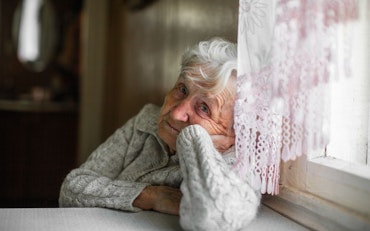Developing policies around housing for later life
A paper about older Australians and their homes has been written to develop policies around housing for later life. Emily Millane, author of the paper, The Head, The Heart & The House: Health, Care and Quality of Life, gives a summary of her work.

A paper about older Australians and their homes has been written to develop policies around housing for later life.
Homes are bricks and mortar and more. What they are and what they represent is not sufficiently captured by the labels “primary residence” or “owner occupied dwellings.” It is only when we understand this that we can develop policies around housing for later life.
The starting point is to let go of the idea that rational policies and financial incentives are the only way to influence older people about where and how to live. This approach has not worked.
In a kind of rational policy nirvana older people might all downsize and ‘free up’ housing for younger generations. However the reality is that many people, particularly current older cohorts, will choose to age in their current homes for a variety of reasons.
We therefore need a policy mix that adapts the current housing stock to longer lives while also developing new housing, particularly for the vulnerable aged.
Per Capita recommends a government reimbursement scheme for home retrofits. Based on our research on the psychology around housing, and lessons we have learned from behavioural economics, we recommend that the government assists people to plan for later life housing (‘Living Plans’). The government should also invest in a review of previous initiatives such as the Housing Help for Seniors Pilot Scheme with a set of questions on the psychological impediments to uptake.
In the area of technology, the government should invest in research about the ways that technological innovations can be promoted, marketed and implemented so people can live better at home. We also recommend that the new Home Care Packages (HCPs) be evaluated to include a qualitative assessment of technology people have taken up as part of the scheme.
Wealthier Australians should contribute more to their own care through the use of home equity. We recommend a modification to the Pension Loans Scheme for this purpose, whereby people with wealth over a certain threshold make a greater contribution to their care via a loan against their property.
We also recommend that people working in the aged care field have mandated higher training and education levels, and better pay conditions.
All aged care workers should have to undertake a minimum level of education such as the Certificate III in Aged Care, with compulsory units in gerontology and dementia built into that course.
Finally, it is self-evident that the home cannot be a place which gives you any quality of life if you don’t have one. Anglicare research has shown that only 6% of Australian rentals are affordable and appropriate for couples on the age pension; this goes down to 1.5% for single pensioners.
We propose that housing bonds be used to develop affordable renting housing stock, designed using the Liveable Housing Design Guidelines.
We also recommend socially inclusive planning schemes and a review of the adequacy of Commonwealth Rent Assistance for the vulnerable aged. These recommendations relate to current older cohorts but are also very relevant for future generations of older Australians, given the declining rates of home ownership.
Read the full The Head, The Heart & The House: Health, Care and Quality of Life paper.










